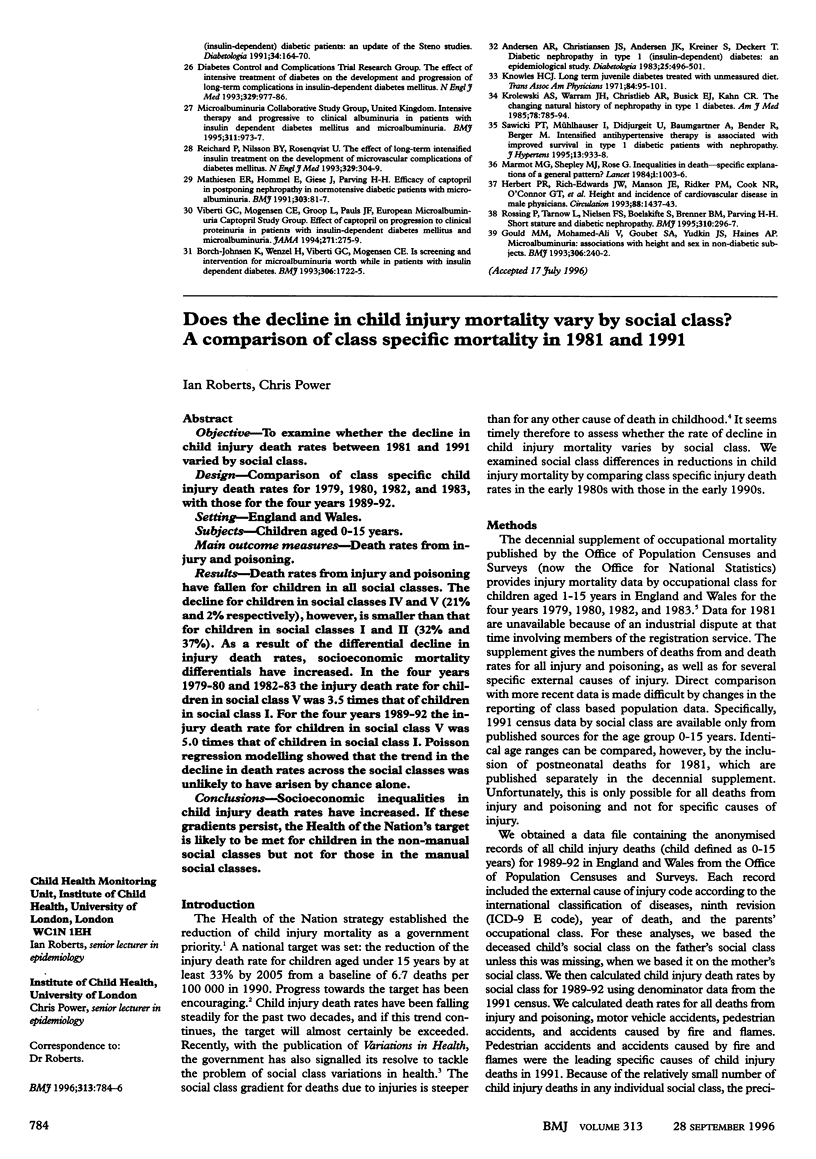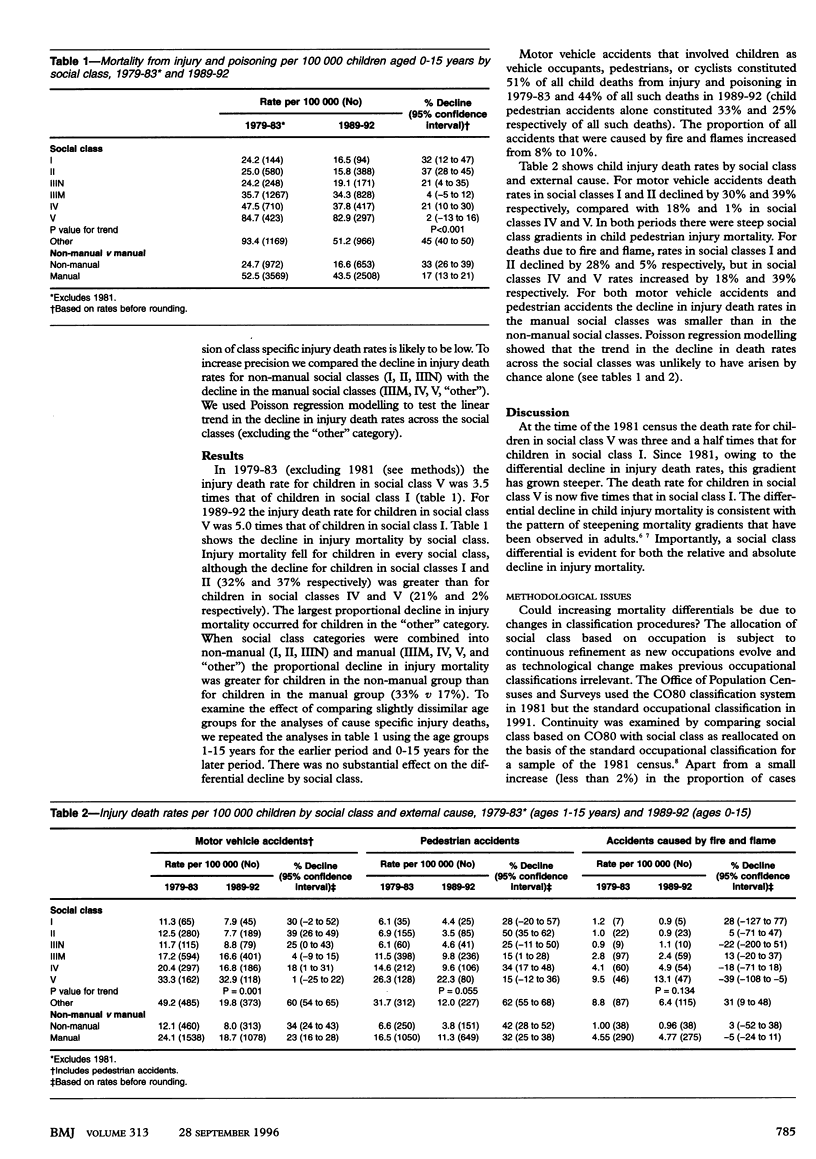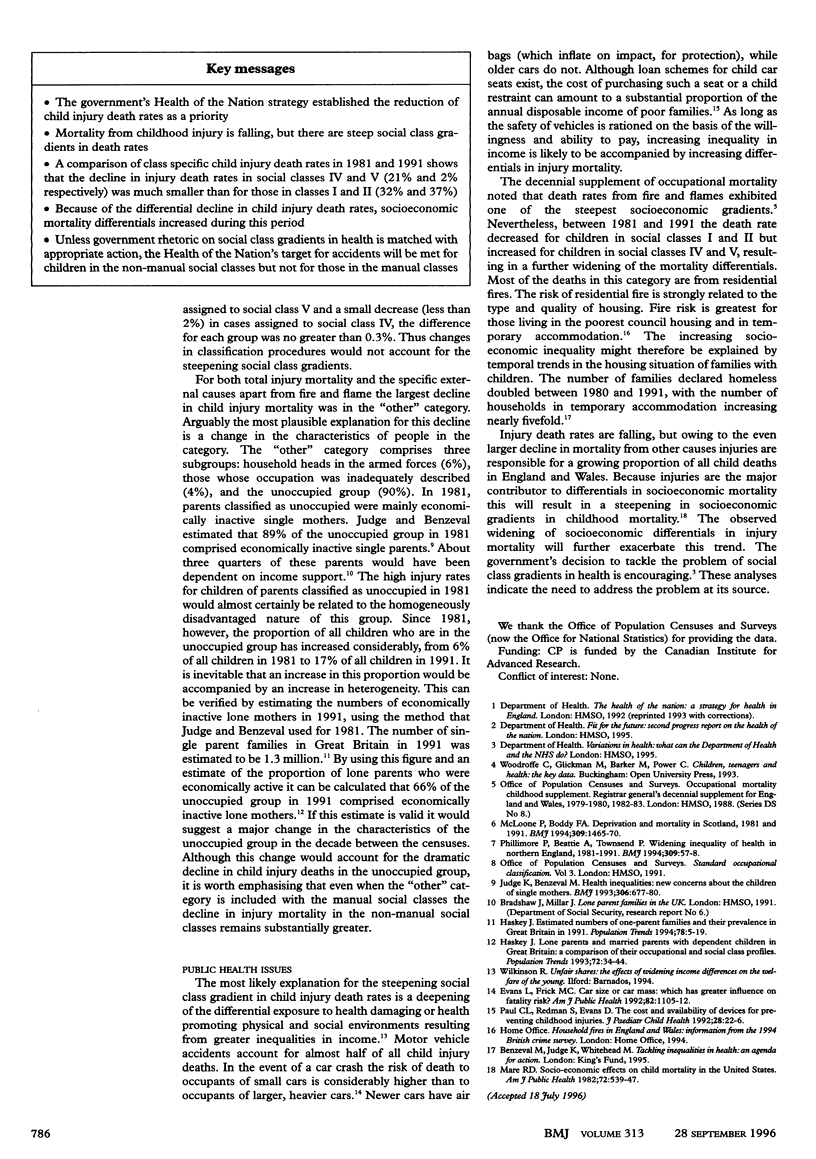Abstract
OBJECTIVE: To examine whether the decline in child injury death rates between 1981 and 1991 varied by social class. DESIGN: Comparison of class specific child injury death rates for 1979, 1980, 1982, and 1983, with those for the four years 1989-92. SETTING: England and Wales. SUBJECTS: Children aged 0-15 years. MAIN OUTCOME MEASURES: Death rates from injury and poisoning. RESULTS: Death rates from injury and poisoning have fallen for children in all social classes. The decline for children in social classes IV and V (21% and 2% respectively), however, is smaller than that for children in social classes I and II (32% and 37%). As a result of the differential decline in injury death rates, socioeconomic mortality differentials have increased. In the four years 1979-80 and 1982-83 the injury death rate for children in social class V was 3.5 times that of children in social class I. For the four years 1989-92 the injury death rate for children in social class V was 5.0 times that of children in social class I. Poisson regression modelling showed that the trend in the decline in death rates across the social classes was unlikely to have arisen by chance alone. CONCLUSIONS: Socioeconomic inequalities in child injury death rates have increased. If these gradients persist, the Health of the Nation's target is likely to be met for children in the non-manual social classes but not for those in the manual social classes.
Full text
PDF


Selected References
These references are in PubMed. This may not be the complete list of references from this article.
- Haskey J. Estimated numbers of one-parent families and their prevalence in Great Britain in 1991. Popul Trends. 1994 Winter;(78):5–19. [PubMed] [Google Scholar]
- Judge K., Benzeval M. Health inequalities: new concerns about the children of single mothers. BMJ. 1993 Mar 13;306(6879):677–680. doi: 10.1136/bmj.306.6879.677. [DOI] [PMC free article] [PubMed] [Google Scholar]
- Mare R. D. Socioeconomic effects on child mortality in the United States. Am J Public Health. 1982 Jun;72(6):539–547. doi: 10.2105/ajph.72.6.539. [DOI] [PMC free article] [PubMed] [Google Scholar]
- McLoone P., Boddy F. A. Deprivation and mortality in Scotland, 1981 and 1991. BMJ. 1994 Dec 3;309(6967):1465–1470. doi: 10.1136/bmj.309.6967.1465. [DOI] [PMC free article] [PubMed] [Google Scholar]


